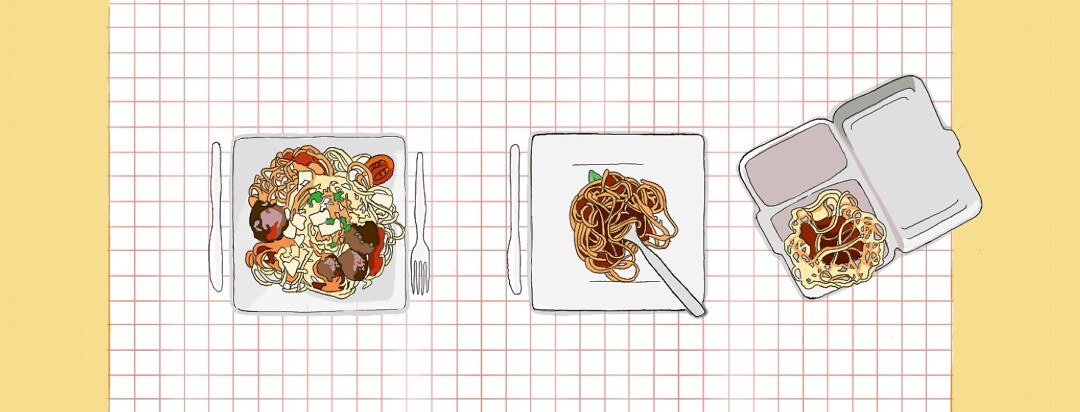How to Balance Your Type 2 Diabetes While Eating Out
With the slow opening of restaurants, one may be inclined to revisit all of your pre-pandemic favorites. But the excessively large portions commonly experienced with eating out can wreak havoc on blood glucose levels—making it challenging to find a healthful balance.
What's the problem with eating out?
In fact, both plate and portion sizes have increased over the past two decades and currently exceed federal standards.1 It’s by no means a coincidence that there is a parallel between the increase of portion sizes and body weights, which began its upward trend in the 1970s.1 By contrast, at high-end restaurants, you may have thought, “is this all I’m getting for that price tag?” I know I have! The truth is that we’ve come to expect more. But, usually, the nutrient density of these larger portions is often lacking.
Healthy tips for eating out with type 2 diabetes
While restaurants can be a culprit to rising blood glucose levels beyond an appropriate range, snacking should also get considered. After all, we snack more than we did in the 1970s. But there are ways to “have your cake and eat it too” while healthfully managing your blood sugar levels. Check out these must-know tips to balance your type 2 diabetes while eating out.
Snack smart
If you’re planning to eat out, snack wisely by choosing wholesome, minimally processed foods that are naturally lower in calories.2 Opt for low-energy, nutrient-dense foods to help promote a feeling of fullness while reducing energy intake.
Welcome the fiber
Embrace Mother Nature’s finest creations by making the bulk of your meal colorful veggies. Then, complement the dish with whole grains and lean proteins to create a beautifully balanced meal. For example, step up your salad game by adding roasted veggies to your greens, topped with lentils, grilled chicken breast, and creamy tahini dressing. Let your veggies be the star of the show, rather than a supporting role. By choosing voluminous, high fiber, low-calorie foods (romaine, roasted veggies), gastric emptying gets delayed — ultimately keeping you satisfied between meals to reduce overall caloric intake. At restaurants, experiment with adding a side of steamed veggies for a satisfying and filling meal.
Expend more energy throughout the day
There isn’t a one-size-fits-all approach to managing your blood glucose levels. Staying on track with your health goals can come from a sweat sesh or an accumulation of active tasks throughout the day! Check out these easy ways to burn more calories to help keep blood sugar levels steady.
- Take the stairs if it’s three flights or less.
- Get off a subway/bus stop early and walk the rest.
- Make your workout happen by scheduling it in.
Go halfsies!
Order once and enjoy twice! Ask the waiter to split your order in two, saving half for another day. Portion sizes at restaurants are often much larger than one would typically consume at home. Keeping your stomach ¾ full versus leaving the table uncomfortably “stuffed” helps keeps you energized and serves as a good blood glucose control method. The Japanese have an expression: hara hachi bu, which roughly translates into “eating no more than 80% full.” While at the table, conduct periodical mental checks to assess your fullness level. It can help you become more aware, slow down, and avoid overconsuming.
Go sauce on the side
Condiments and sauces can pack on unwanted sugar and calories, making it challenging to manage blood sugar levels while at restaurants. Restaurants often put much more than necessary. Asking for the sauce on the side allows you to control your intake and use an amount that you are both comfortable and satisfied with.
Order first
It’s easy to get influenced by those sitting at the table. When everyone else is seemingly ordering more indulgent choices, it can quickly sway your food decisions. Don’t forget to ask for water!
Be mindful of alcohol intake
Fruit cocktails are usually high in sugar and calories. Not to mention, chronic alcohol intake can make it challenging to control blood glucose levels. Drinking alcohol is associated with higher eating rates, prolonged meal duration, and delayed increases in satiation (feeling full and satisfied). Its regular consumption may negatively affect the distribution of body fat, increasing cardiovascular disease risk. If you choose to drink, do so in moderation and know your limits to best keep your blood sugar levels under control.
Set yourself up for success
Throughout your journey towards better health, it’s critical to make realistic, gradual changes to allow your body to adjust to consuming fewer calories. Embrace the spirit of adventure and let your tastebuds experience new yet healthier foods. Don’t forget to be flexible. But don’t completely sacrifice your favorites instead avoid a complete food free-for-all. When possible, check out the menu or any nutrition information online ahead of time to ease the stress of ordering or making impulsive selections. Lastly, balance calories in with calories out. Instead of ordering coffee and dessert, enjoy a walk after dining out.

Join the conversation